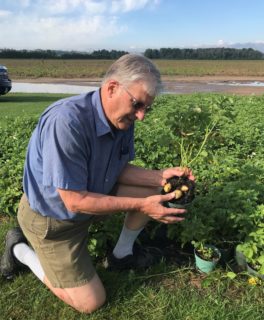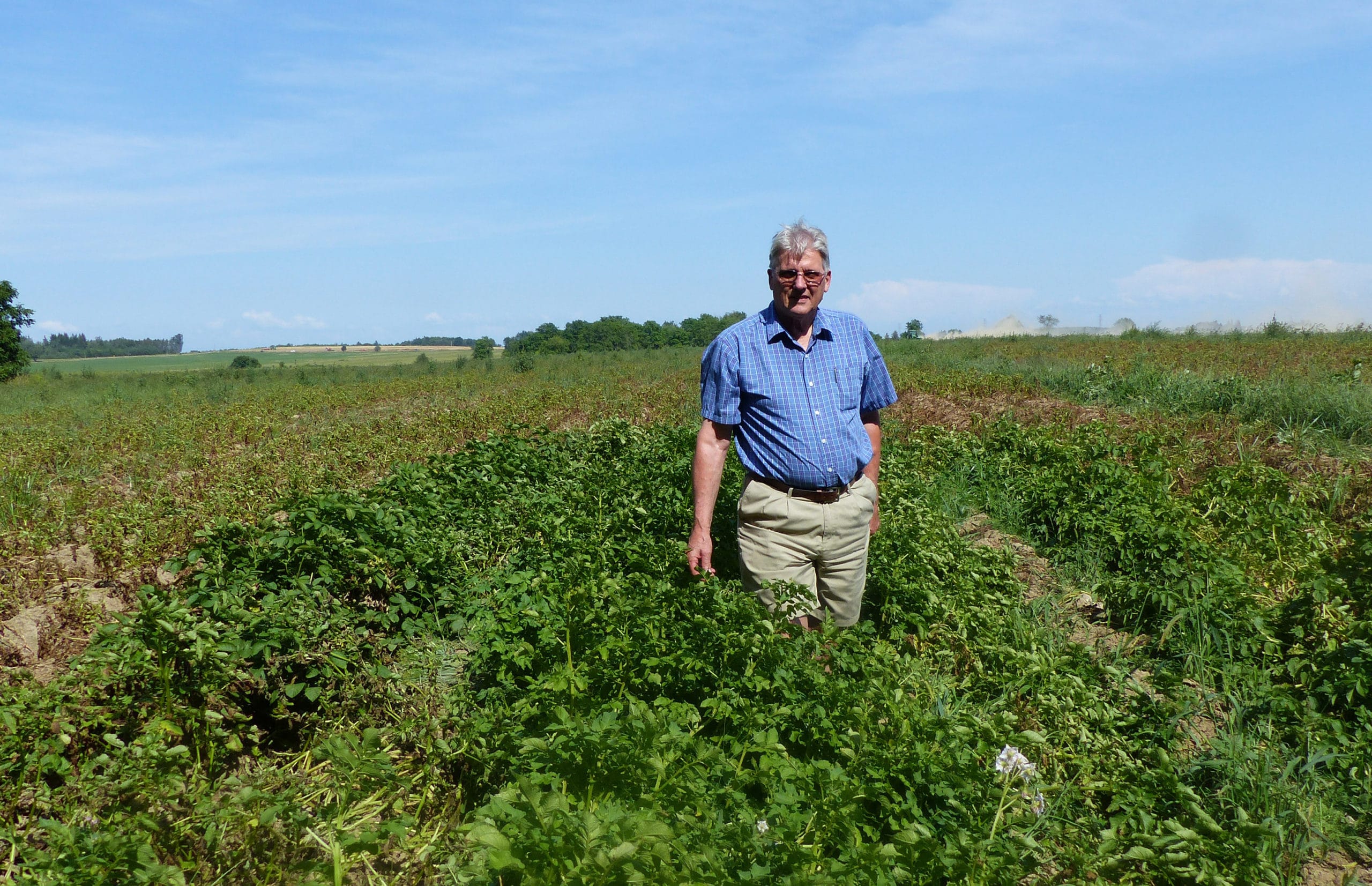A group of Canadian potato breeders have teamed up to breed potato varieties for late blight resistance.
Potato breeders strive to develop new varieties with improved yield and quality. Important attributes could include reduced susceptibility to insects and diseases, improved nutritional value or increased tolerance to environmental stresses.
The process is slow — it usually takes eight to 12 years from the first cross to the release of a new cultivar. This long-term process fosters collaboration among breeders, growers, processors, researchers, and extension personnel. The network assists in the development of management guidelines, detects problems and determines the predictability of performance of each new cultivar.
Each step in the breeding of a new potato variety is critical for a successful commercial release. Parents are selected with known desirable attributes and crossed to produce true potato seed the first year. Seedling tubers are grown from the true seed the second year. The selection phase begins in year three when each seedling tuber is planted in the field as a single hill. As the years progress, fewer and fewer selections remain, and the weight of seed tubers per retained clones increases. Once there is enough seed, promising selections are planted in trials in growers’ fields. Very few selections make it this far. Selections for commercial release need to be established in tissue culture and any virus contamination dealt with before the cycles of multiplication can begin to produce enough seed for commercial sale.

In Ontario, we are fortunate to have Peter Vander Zaag, a potato breeder who is also a grower at Sunrise Potato and a globally recognized potato scientist. Vander Zaag has joined forces with Joyce and Robert Coffin with Privar Farms Inc. at Trenton, Ont., Andre Gagnon with Progest in Quebec, and Darin Gibson from Gaia Consulting, in Manitoba, to form a working group named PSGP (standing for Privar Farms Inc., Sunrise Potato, Progest and Gaia Consulting).
According to Vander Zaag, they decided to work together because:
- Each of them had a different end-use for their potatoes, so they were not in competition for markets.
- Breeding for late blight resistance was a common goal to reduce fungicide use, environmental contamination, and yield loss. Vander Zaag had identified multiple-gene resistance to late blight in several cultivars that originate from germplasm provided by the International Potato Center in Peru. Unfortunately, these cultivars are not adapted to the long days of the Canadian summer. The PSPG group see a great benefit in incorporating late blight resistance into varieties grown in Canada
- Joyce has been crossing late-blight resistance into varieties for french fries. Vander Zaag has added varieties for chipping to the list, and the plan is to make the list longer.
- New selections must be tested in growers’ fields in different provinces, and there are members from three provinces. They plan to test internationally as well. Gagnon has connections in Latin America, and Vander Zaag in Asia.
The collaboration is ongoing for five years now. In 2021, some selections from the initial crosses were planted in an organic field where late blight developed late this season. The results were encouraging with three clones having excellent resistance. Others were susceptible to various degrees. The clones will need to be re-tested to confirm the results, but what was seen in the field this season was striking.
Plant breeding is not for the impatient or the faint of heart. Potato breeders typically discard at least 50,000 seedlings for every one that gets to commercial release, and then there is the wait to see if growers will switch to new varieties. But when they do, it feels like you’ve won the lottery. Vander Zaag says PSGP looks forward to the day when they get that winning ticket and develop potato varieties resistant to late blight for Canada!
Header photo — Peter Vander Zaag in field with potato clones showing resistance to late blight. Photo: Eugenia Banks
Related Articles
New Late Blight Resistant Potato Variety Released









